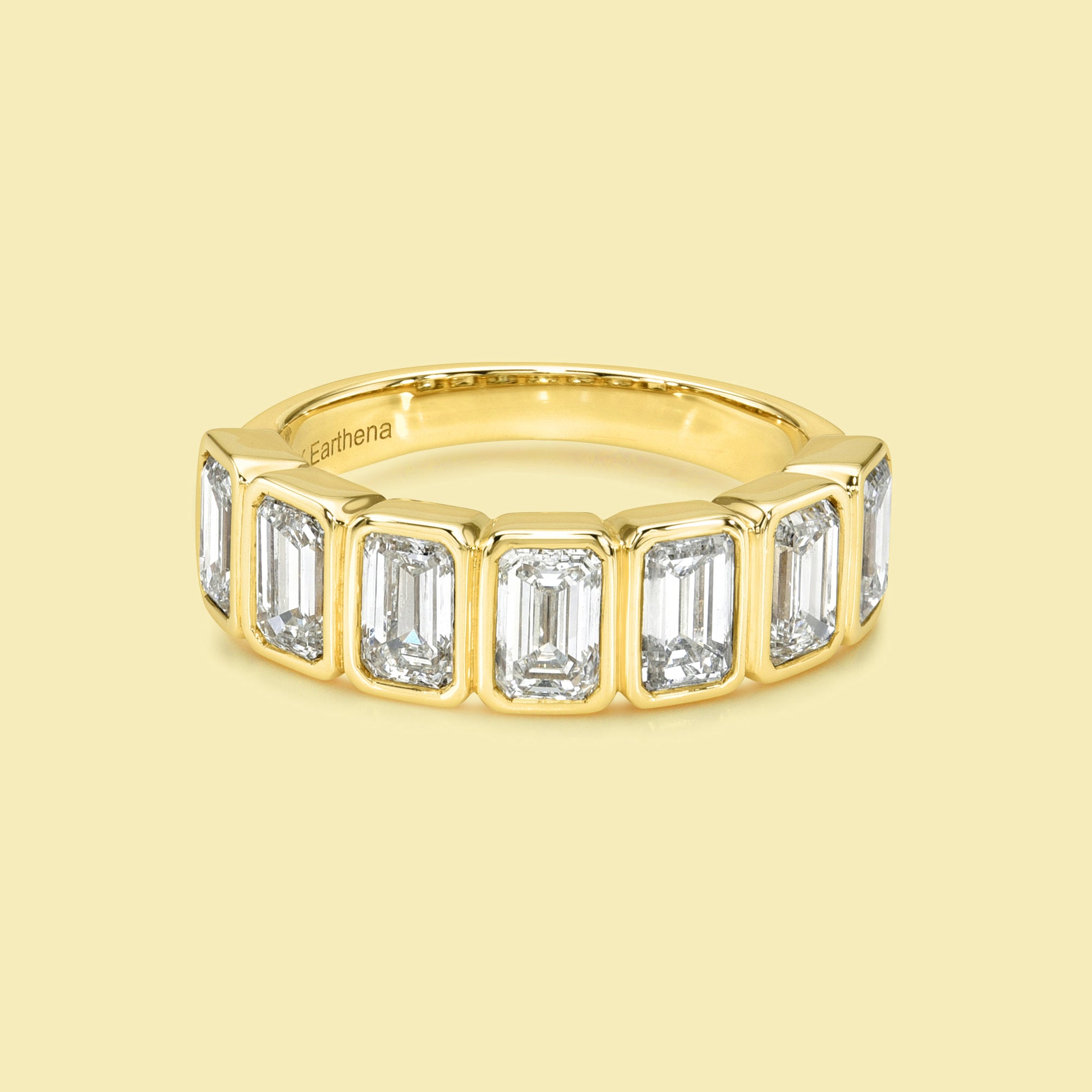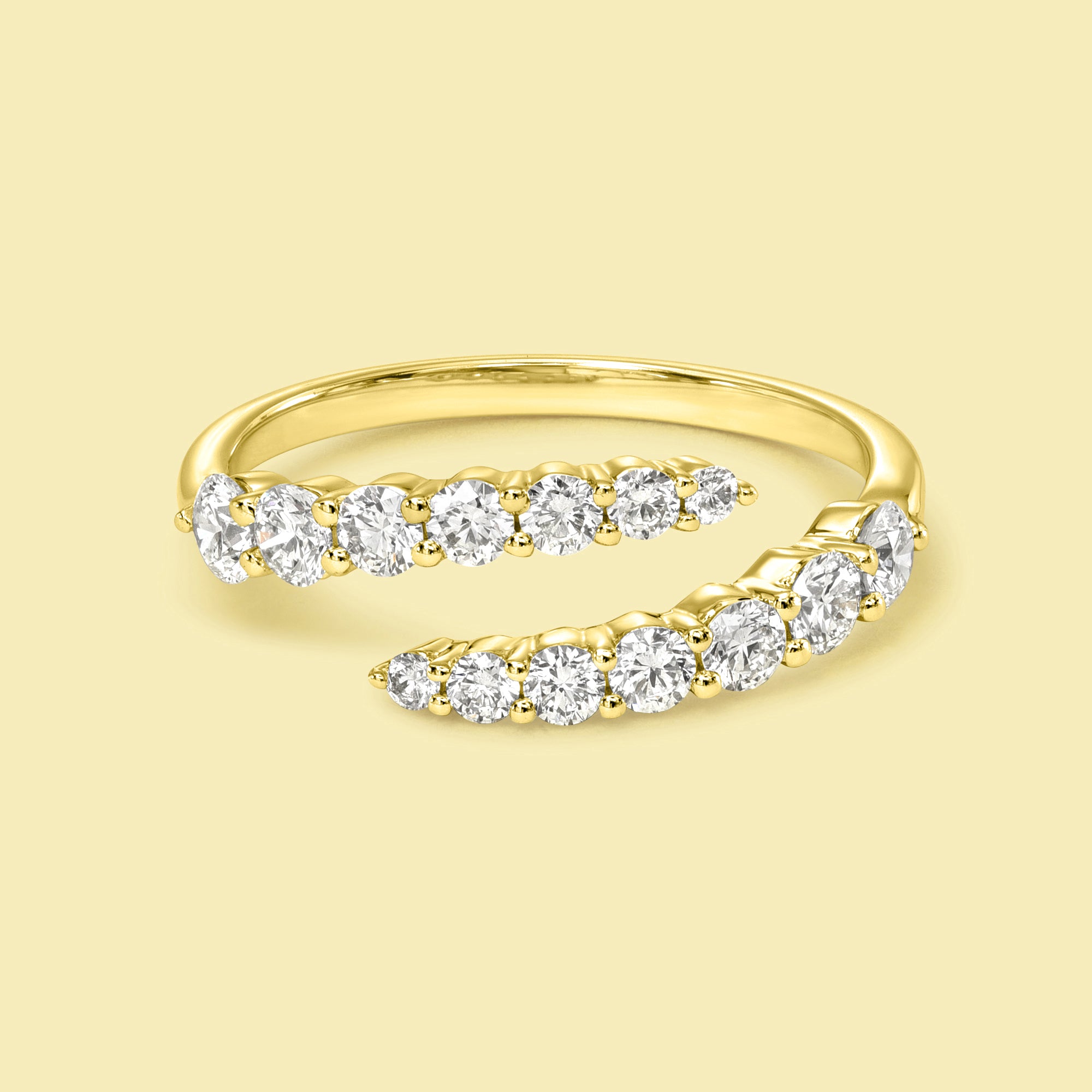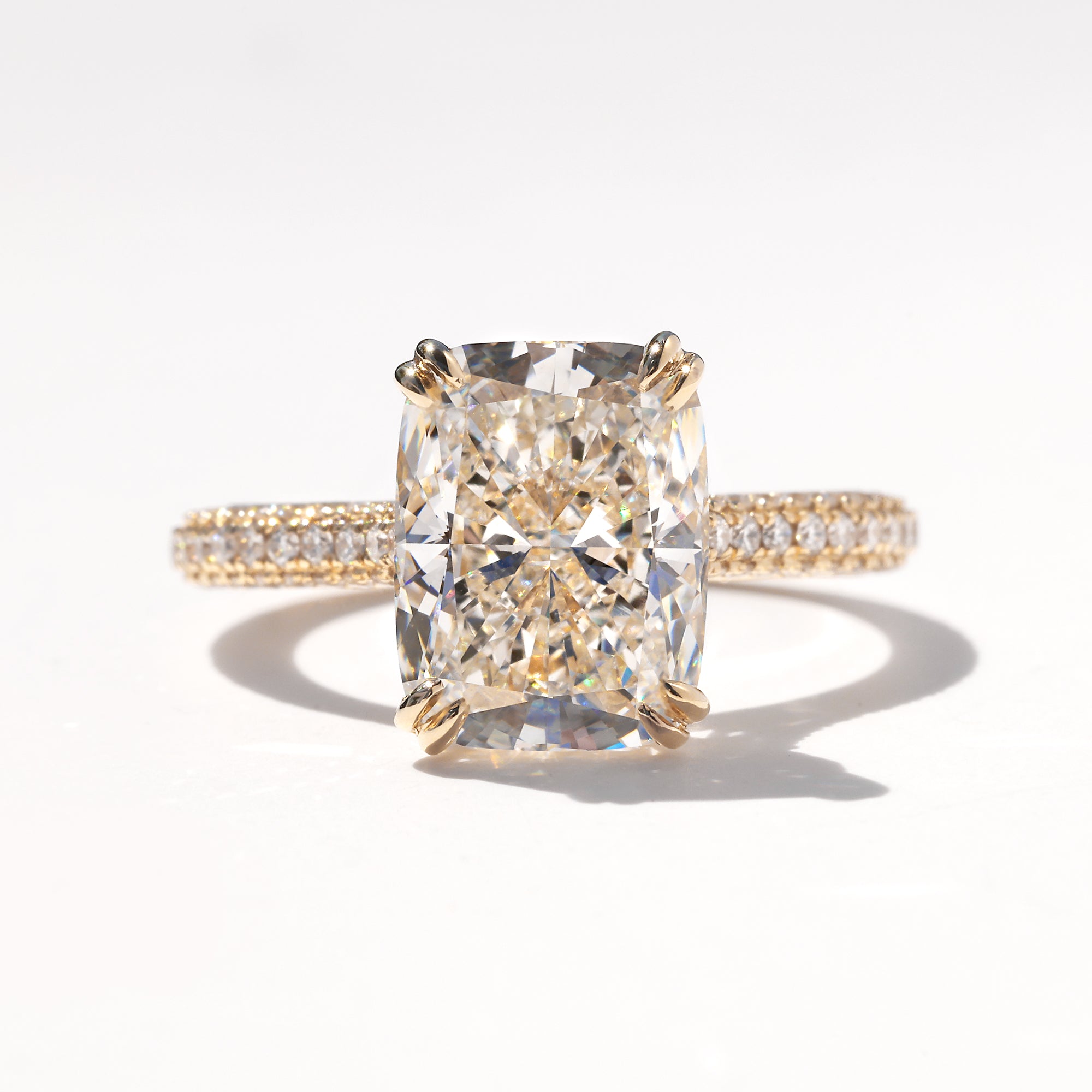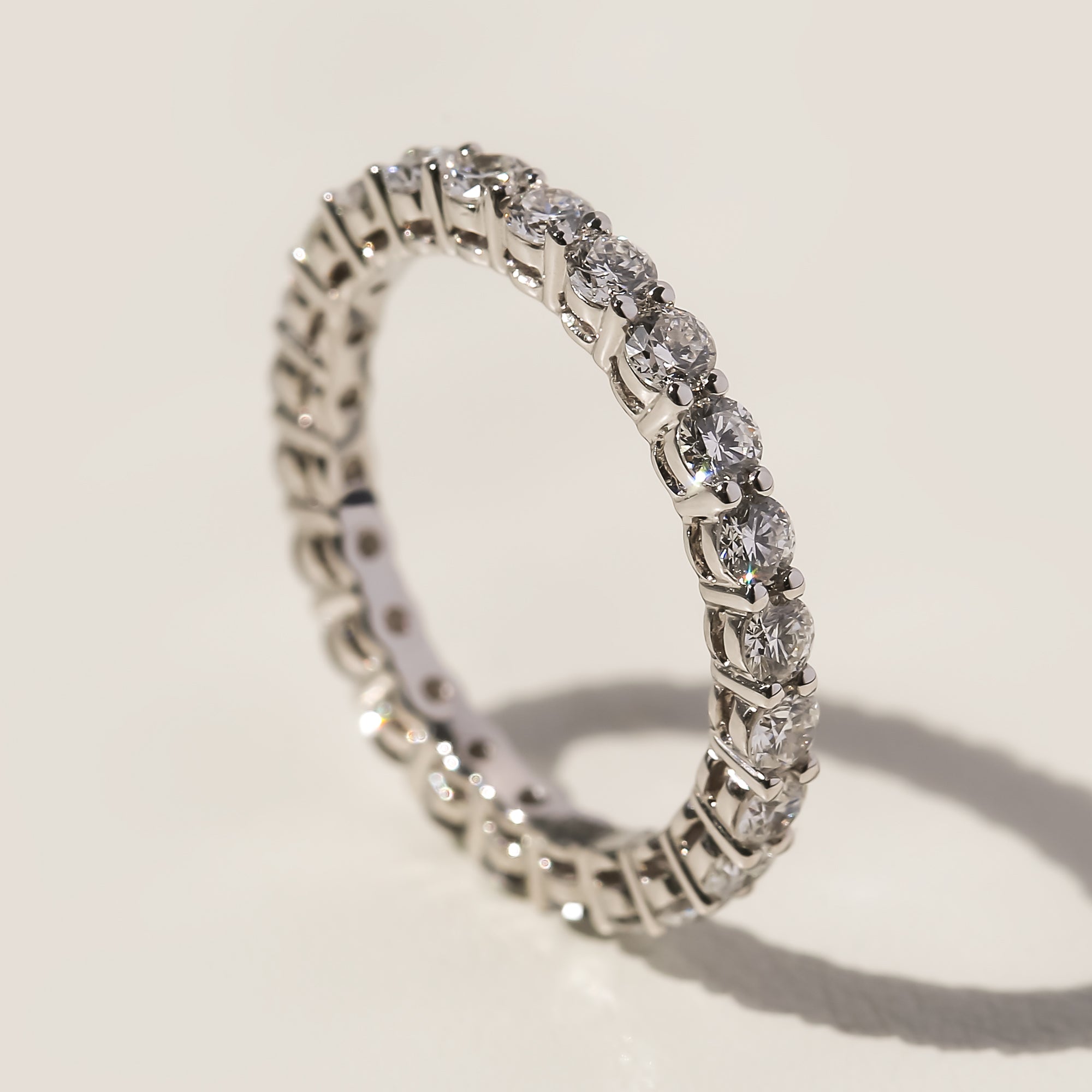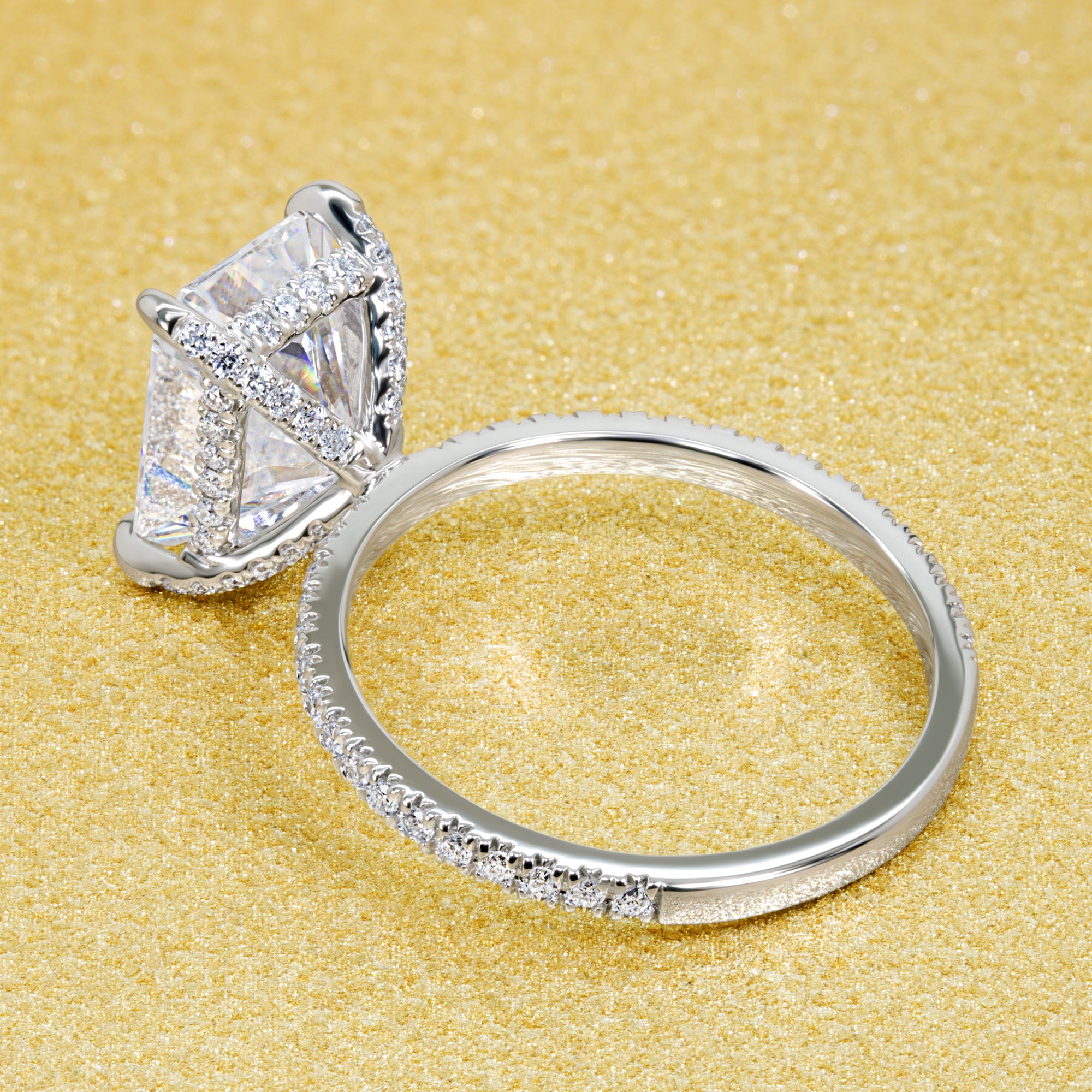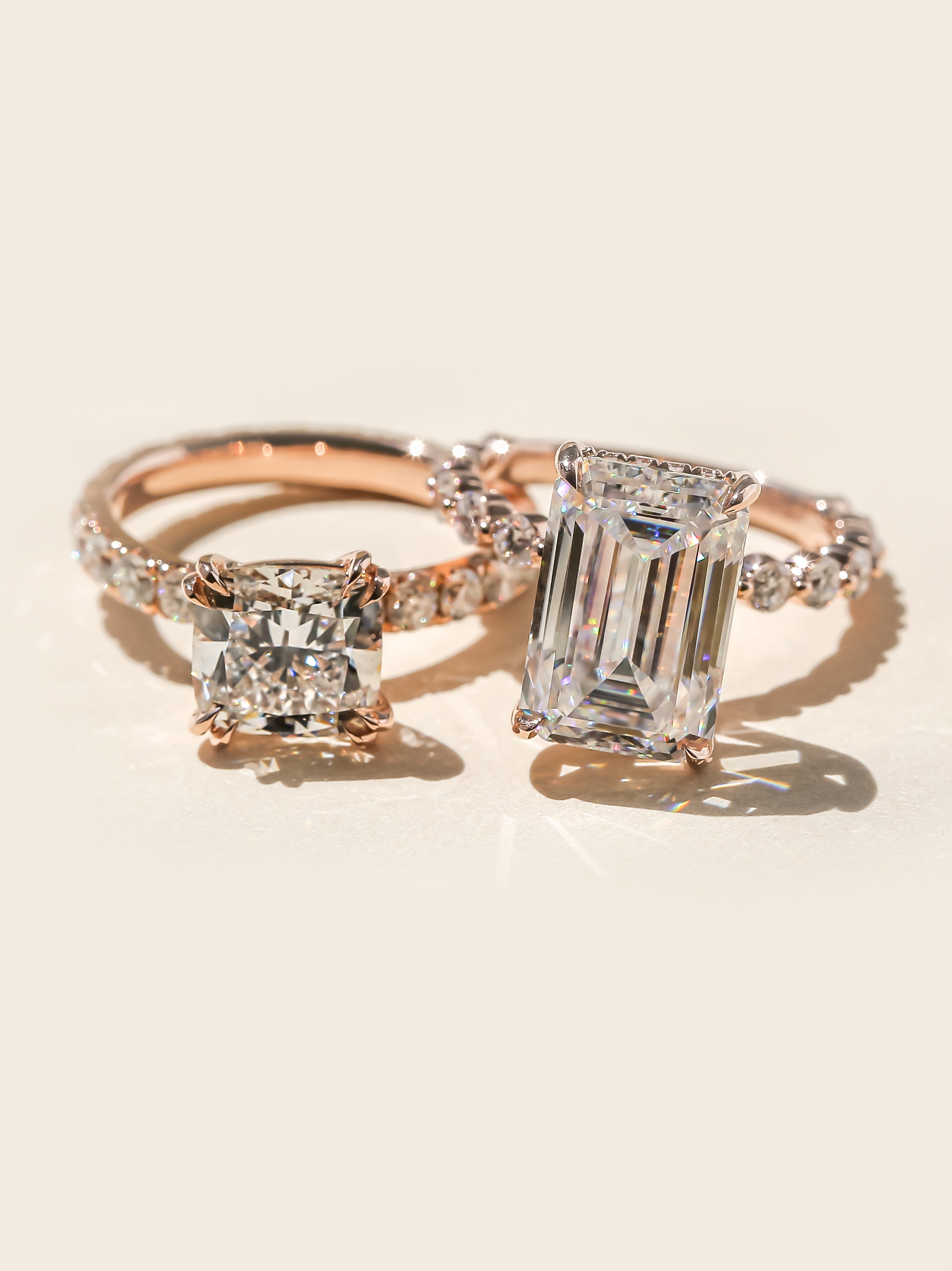
What is Earth-mined Diamond?
An Earth-mined diamond, also known as a natural diamond, is a diamond that is extracted from the earth through mining processes. These diamonds form naturally over billions of years under high-pressure, high-temperature conditions deep within the Earth's mantle.
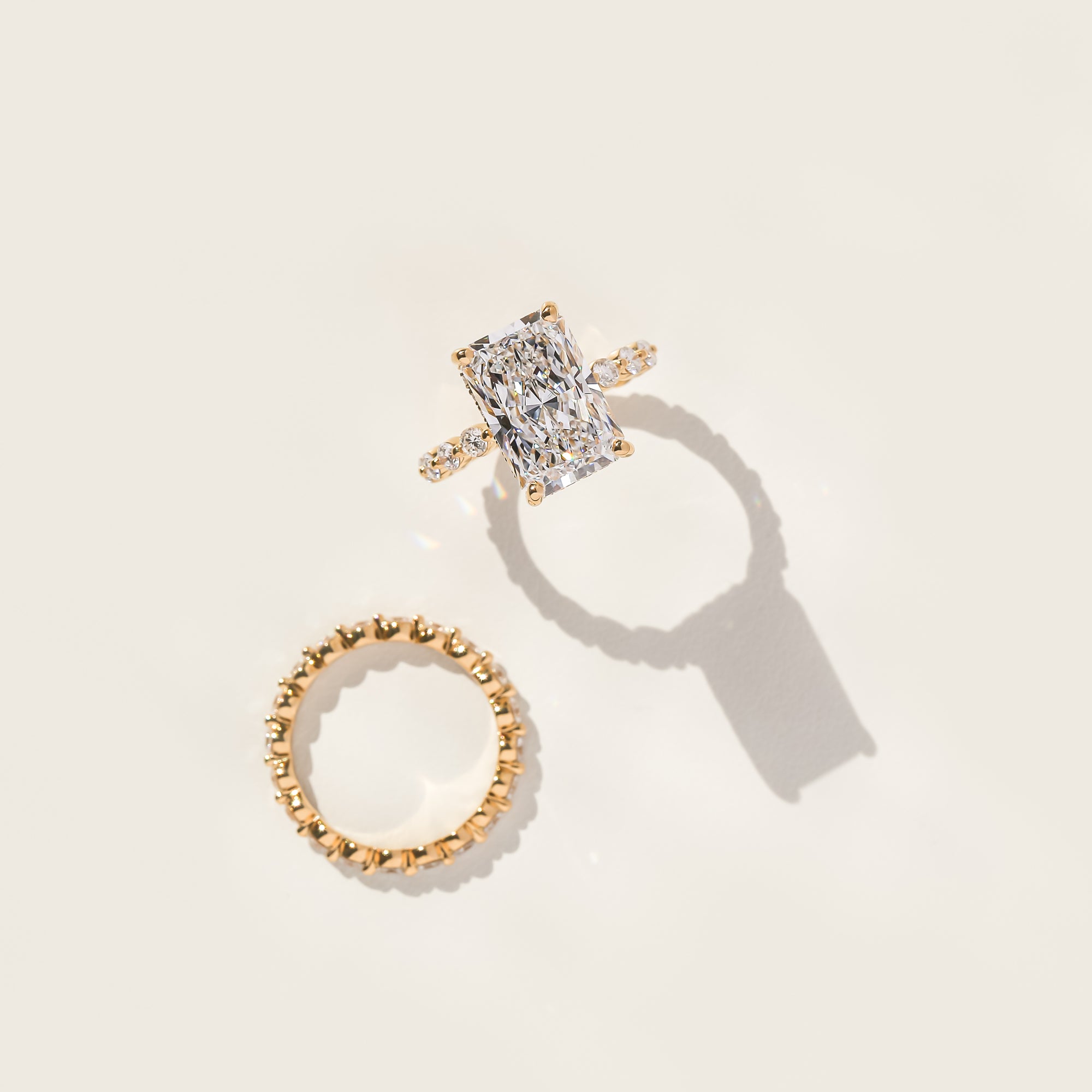
Our Promise
At Earthena Jewelry, we pride ourselves on using only ethically sourced earth-mined diamonds, guaranteeing your piece is conflict-free.
Earthena Jewelry
4.9
61 reviews
AI-Generated Summary
Based on 61 reviews
Excellent customer service, speedy responses, and ensuring timely delivery before Christmas
Beautiful ring designs, high-quality products, and attention to detail in the craftsmanship
Trustworthy online jewelry store with positive reviews, amazing customer service, and willingness to offer discounts and assistance in case of loss or damage to the ring
Beautiful ring designs, high-quality products, and attention to detail in the craftsmanship
Trustworthy online jewelry store with positive reviews, amazing customer service, and willingness to offer discounts and assistance in case of loss or damage to the ring
Show more
AI-Generated Summary
Based on 61 reviews
Patrick Enriquez
15 hours ago
Powered by

Verified
From start to finish, Earthena absolutely exceeded our expectations. I purchased my wife’s engagement ring and our wedding bands through them, and I genuinely couldn't be happier with the experience—or the results.
My wife is obsessed with her ring. She gets compliments constantly, and I’ll even catch her staring at it when she thinks I’m not looking. The design is elegant, the craftsmanship is unreal, and you can tell there’s real care behind every detail.
If you're in the market, about to hop on one knee, and ready to take the next step in your relationship—this is your sign to go with Earthena. The rings are beautiful, the service is amazing, and the whole experience feels personal and intentional. Couldn’t recommend them more.
Show more
Patrick Enriquez
15 hours ago
Brent Paul Noel
4 months ago
Powered by

Verified
It's nice working with Alex. They make sure that I'll get the ring before christmas eve! Highly recommended
Brent Paul Noel
4 months ago
jesse yang
5 months ago
Powered by

Verified
What an amazing experience working with Alex. The communication was great, design on the ring is amazing, and I felt like I was important to them immediately.
jesse yang
5 months ago
mandc campbell
6 months ago
Powered by

Verified
Love LOVE the ring, it’s addition to my wedding set.
mandc campbell
6 months ago
Samuel Komolafe
8 months ago
Powered by

Verified
My partner loved the Elongated Oval ring!
Samuel Komolafe
8 months ago
Lisa Hill
8 months ago
Powered by

Verified
I am so glad we went with Earthena for my upgrade! I swear the photos don’t do it justice for how beautiful my new ring is. I’m truly obsessed.
Let me just say, I’ll admit that my husband and I were definitely skeptical on buying from an online jewelry store. There’s soooo many online jewelry stores out there, and you just never know who’s legit and who’s not. Believe me, I know it can be scary buying something pricy online. We went with Earthena because we looked extensively online for all the reviews that we could possibly find on their company, and we saw nothing but amazing things. Their customer service is speedy and top tier, which made us feel even more comfortable buying from them, and, of course, the jewelry pieces are just gorgeous. I’m not sure if I ever plan on upgrading my wedding band, but if I do, I’ll definitely be buying from Earthena again. (I might buy a wedding band from them and just make a stack!) I truly couldn’t be any happier with my new ring. Our only regret is not buying from them for my original ring! Thank you again Earthena! I couldn’t recommend you guys enough!
Show more
Lisa Hill
8 months ago
Rick Owens
9 months ago
Powered by

Verified
Hey from Dallas, TX. I bought an engagement ring in 2022. The quality of the ring has been just as great as the customer service. The lady gets a lot of compliments on her ring. This was the first time I purchased jewelry online, so I was skeptical at first, but I have had back and forth conversations with Alex who has made themselves available outside of normal business hours to bring me peace of mind and answer all of my stupid questions. Recently, July 2024, my loving fiance LOST her freakin ring while at work. We reached back out to the company to inquire about buying another ring, the same one. Not only did they say it was easy to do, they even offered a small discount just to help take the sting off a little. They also provided information on how to insure the jewelry. I did not ask for or expect any of this, but that is a testament to the type of service Earthena provides. Lucky for us, she just misplaced the ring and I didn't have to spend thousands more on something else, BUT needless to say, I was still impressed by the quality of jewelry and their customer service. If you had doubts like I did, squash 'em! I hope this review finds you and helps you with your decision 👍👍 Special shout out and thanks to Alex!
Show more
Rick Owens
9 months ago
Jewel Christensen
9 months ago
Powered by

Verified
My fiancé got me the Moissanite 3ct Adara ring in 18k gold we added an addition to the setting it’s my dream ring it is so gorgeous. I look at it 100 times throughout the day. In the sun light it sparkles so much, in any light really even at nightime it sparkles which is really I wanted I don’t even care to have “real diamonds” the gold on the band shines & sparkles as well. I have had it for about 10 days now since he proposed with it & I don’t think I’ll ever get tired of looking at it & taking tons of pictures of it. As far as I know for customer service it was perfect my fiancé reached out to make it custom they did it no problem and if I remember correctly it came faster then the shipping time he was given so that’s always a plus. I am in love with my ring. I will definitely consider getting my band from earthena as well.
Show more
Jewel Christensen
9 months ago
Mark Ogden
10 months ago
Powered by

Verified
Earthena Jewelry Store helped me craft the perfect ring for my fiancé. They were professionally sound and always communicating with me about the ring during the process!
Show more
Mark Ogden
10 months ago
Casey Roberts
10 months ago
Powered by

Verified
It has been really good working with Earthena. They were super helpful when answering any questions, quick responses, and provided a great quality product.
Show more
Casey Roberts
10 months ago
Audra Wildman
1 year ago
Powered by

Verified
My fiance purchased my 3ct Oval Grace from here! It’s incredibly stunning, and I recieve so many compliments on it! The rings you see online look exactly like the rings you see on their website and Instagram. The customer service from social media chats to email is amazing. He purchased last year on May 5th, and this month I sent it in for professional cleaning + some other ring services. The rings have a lifetime warranty on them!
Alex with the customer care team has gone above and beyond with communication (probably sick of me!! lol) and making sure that I’m taken care of.
I highly recommend if you’re looking for a customized sustainably sourced engagement rings and wedding bands!
Show more
Audra Wildman
1 year ago
Agnes Newsome
1 year ago
Powered by

Verified
I had a great experience ordering from Earthena. Alex assisted me the whole way through. It was finished in one month. This is a 3 ct yellow gold 2mm band hidden wrap halo! Thank you guys for making the ring of my dreams. Literally could cry cuz I’m so happy!
Show more
Agnes Newsome
1 year ago
Jordan Hale
1 year ago
Powered by

Verified
They create amazing rings, absolutely stunning. I was a little apprehensive to spend the money on a website, but the ring came exactly as described and faster than estimated processing time. Their customer support is top notch too. Definitely buying the wedding band from them too.
Show more
Jordan Hale
1 year ago
bineet toor
1 year ago
Powered by

Verified
such beautiful rings. so impressed with the quality and details put into the ring we got for my SIL! service was also so good. came so fast.
bineet toor
1 year ago
Jessica Cook
1 year ago
Powered by

Verified
My gem on my first ring had become loose twice and each time they fixed it promptly! I did have to pay a small fee but worth it to get it fixed and not have to pay for a new ring! My ring is stunning and we are very happy with it!
Show more
Jessica Cook
1 year ago
Anthony & Jessica
1 year ago
Powered by

Verified
Customer service is amazing!! They respond so quickly and are extremely helpful. I love my ring and I always get compliments! I can't wait to purchase my wedding band from them too! I completely recommend purchasing from them!
Show more
Anthony & Jessica
1 year ago
Han A
1 year ago
Powered by

Verified
So Iv been looking at many places to customize my dream ring. I kept searching and searching and one day I came across Earthena Jewelry on instagram and I'm glad I did! First of all Customer Service, Alex was absolutely amazing! He was so patient and helped me through all the questions I had especially when I wasn't sure and kept going back and forth about sizing and everything. But when it all came down to it, I finally chose the ring I wanted. Now I have my ring and it’s just so gorgeous! I can’t stop looking at it! The detail, everything about it, its everything I wanted. Thank you so much and again so happy I went with Earthena Jewelry!
Show more
Han A
1 year ago
Alexandria Deppe
1 year ago
Powered by

Verified
This company has the best customer service I have ever experienced. They are incredibly helpful, and timely with their responses. My ring is so beautiful. I’m so pleased with the craftsmanship. The shipping and processing time was accurate, and updated frequently. If you are hesitant and wondering if this company is for you, I would definitely recommend.
Show more
Alexandria Deppe
1 year ago
Jonathan Guillen
2 years ago
Powered by

Verified
Proposed a couple days ago and my now fiancé couldn't be more excited about her ring. She absolutely loves it. Beautifully designed rings and A+ customer service.
Show more
Jonathan Guillen
2 years ago
Kenzie J-P
2 years ago
Powered by

Verified
My wedding band is absolutely stunning, I can't stop looking at it! Packaging is very beautiful. Customer service was 10/10, their response time is very fast, they are happy to accommodate any changes or answer any questions. Overall I had an amazing experience with Earthena. I will 100% purchase from their website again (I have my engagement ring picked out from Earthena already!!)
Show more
Kenzie J-P
2 years ago
KURT DUBE
2 years ago
Powered by

Verified
Beautiful ring set
KURT DUBE
2 years ago
Becca Gilbert
2 years ago
Powered by

Verified
I had such an amazing experience customizing a ring with Earthena. I was extremely nervous at first at the idea of ordering my engagement ring online, but after talking to Alex I knew I was In great hands. They were extremely responsive and thorough to all the questions that I had. This company truly cares about their customers and had made me feel so special . I had a much better experience working with Earthena vs going to local jewlers. My ring is everything I wanted and more ! It’s absolutely stunning. I highly recommend Earthena if you are in the market for a beautiful ring. Thank you for giving me my perfect engagement ring❤️
Show more
Becca Gilbert
2 years ago
Verónica Ruiz
2 years ago
Powered by

Verified
Thanks to the entire Earthena Jewelry team. I loved my rings, I am so happy. I chose this jewelry store because of the attention and all the good options they have for their customers.
Thank you Alex for taking care of every detail of my rings. 100% recommended this store.
Show more
Verónica Ruiz
2 years ago
Fabian
2 years ago
Powered by

Verified
This company and everyone in it is a pleasure to deal with ! Thank you for making the perfect ring
Fabian
2 years ago
Nguyen
2 years ago
Powered by

Verified
I have an extremely small finger size and required to customize my design. Alex was very patient and went out of his way to guide me through the entire process. Not only that, my ring came out to be so gorgeous and I received so many compliments as soon as I started wearing it. My overall experiences was wonderful and I would definitely recommend Earthena and Alex to my family and friends.
Show more
Nguyen
2 years ago
Isabel Urbann
2 years ago
Powered by

Verified
Where to even start!
Customer Service, Alex was absolutely amazing!! Price and timeliness was Excellent!
I stumbled upon Earthena Jewelry by chance and I am so glad I did! I could not find quite the right ring that I felt would fit to me. After contacting Earthena on Instagram I received a response pretty immediately from Alex and I was told that they can do customized rings. With this I was ecstatic! Alex helped me through all the questions I had and the whole process while being extremely polite and personable, absolutely fantastic to talk to. I have never gone through a ring customization process or really any kind of order like this and I started off a bit nervous but was made to feel extremely confident about the whole process and the decisions. Once the design was discussed and set I received my 3D rendition and it was perfect, better than I imagined it would be, I could not be more happy with it. I haven't received my ring in person just yet but I can't wait for when I do, I know it will be perfect! (will update with it)
Overall my whole experience has been exceptional and I would 100% recommend them to anyone looking for a ring. The service I received was one of the friendliest, stress-free and just overall the best. Thank you so much Alex and the team that worked on my ring!
Okkk so update with the ring pics, a little late and excuse my poor conditioned hands but this ring is AMAZING it’s so beautiful from all angles!!! Here are the photos!I love looking at it
Show more
Isabel Urbann
2 years ago
Nicolas Galindo
2 years ago
Powered by

Verified
Had a great experience purchasing a ring. When I needed help with an issue, Alex provided excellent customer service and was extremely helpful. There was frequent communication and it allowed me to get the product on time.
Show more
Nicolas Galindo
2 years ago
Daniella Magallon
2 years ago
Powered by

Verified
They did an amazing job on my ring! They made it so fast and they tried their best to get it to me before 4th of July! And they did! I love it so much! They also are very nice and respond quick to messages! Thank you so much
Show more
Daniella Magallon
2 years ago
Vera Alexander
2 years ago
Powered by

Verified
My ring is absolutely stunning! The customer service and response time was awesome and I felt comfortable through the whole process. I adore my gorgeous ring ! Thank you Earthena Team!
Show more
Vera Alexander
2 years ago
Peter Serodino
2 years ago
Powered by

Verified
Excellent craftmanship! The ring purchased was even prettier in person! Customer Service was also on point and very helpful when I was getting antsy from waiting to receiving the ring
Show more
Peter Serodino
2 years ago
Jayden Flynn
2 years ago
Powered by

Verified
Ring was absolutely stunning and came on time 😁😁
Jayden Flynn
2 years ago
Ashley Davidson
2 years ago
Powered by

Verified
First of all, I want to say how upset I am that I can ONLY give *5* Stars to Earthena Jewelry, because they are deserving of SO many more! :) My experience with them from the very beginning was AMAZING!!! I followed them on Instagram for a while and was OBSESSED with pretty much EVERY single ring they posted! I knew what I was looking for, as far as style, size, quality, ALL of it -- for my now fiance ;) and reaching out to Earthena was hands down one of the best decisions I probably ever made! Alex was so patient, so kind, so professional, so personable, so very responsive, and was just an absolute PLEASURE to do business with!!! Anybody looking for a lab diamond or moissanite gem stone engagement ring -- DO NOT HESITATE FOR ONE MORE SECOND TO REACH OUT TO EARTHENA/ALEX!!! I PROMISE you, it will be almost mind-blowing the type of service you receive right from the start! :) THANK YOU, ALEX, for walking me through the process from start to finish, for always being so quick to respond, and for showing true, genuine excitement in this process with me! My future Mrs. is OBSESSED with her ring... and you know what?? So is everyone else! ;) :) <3
Show more
Ashley Davidson
2 years ago
Gabby J
2 years ago
Powered by

Verified
I'm SPEECHLESS! If you're thinking of getting a ring from Earthena, DO IT. First, I would like to say customer service was amazing from beginning to end. Alex was patient and super nice with all the questions I had and the entire process of designing my dream wedding set. I got my rings and they're absolutely beautiful! 100% recommend Earthena and would come back for sure! Thank you!
Show more
Gabby J
2 years ago
Abdi Gulleed
2 years ago
Powered by

Verified
I ordered a custom ring and the process, pricing and customer service were all excellent. Alex was extremely helpful and expedited my order as I had not left enough time for normal production. The ring is beautiful and came in as described and even looking better in person. I’m glad I went with Earthena for my special ring, I would recommend to others and I will be shopping with them again.
Show more
Abdi Gulleed
2 years ago
lupe garcia
2 years ago
Powered by

Verified
Very Nice , polite and informative . They really go out of their way to help you choose the best diamond for you! I loved mine. Will definitely buy more from them!
lupe garcia
2 years ago
Jason McDonald
2 years ago
Powered by

Verified
I can’t think of a single negative thing to say about this company. The customer service was impeccable and they were able to go above and beyond for me. I had a bit of a unique situation being that I’m stationed overseas and wanted to be able to propose to my now fiancé while slotted the short timeframe of being back home. I was worried that with how late I ordered the ring that I wouldn’t be able to pull it off but after letting the company know they managed to have the ring to me just in time for me to pull the biggest surprise off. And the ring itself is incredible. I mean truly a stunning piece and constantly gets admirations everyday from bystanders. If you want a ring that is not only earth friendly but will amaze your partner and dazzle the eyes of everyone else all while being treated as if you were part of the royal family then you have come to the right company! I can’t thank them enough!
Show more
Jason McDonald
2 years ago
Khristian James
2 years ago
Powered by

Verified
They are amazing and will make sure you get the best quality. You won’t go wrong with earthena jewelry.
Khristian James
2 years ago
Earnest Riggs
2 years ago
Powered by

Verified
Probably the best experience I've ever had. The best customer experience. Get your jewelry from them asap. They have an open communication policy that makes the experience so worth it. They'll always have my business.
Show more
Earnest Riggs
2 years ago
Cody Hildreth
2 years ago
Powered by

Verified
Unfortunately I ordered the wrong ring, but as soon as I reached out to them about the issue Alex got back to me within the hour, on a Sunday. Alex was eager to help me resolve this and I was able to send it back in to be remade & got it back fairly quickly too. This is an awesome business and they really do focus on customer service. 10/10!
Show more
Cody Hildreth
2 years ago
Johnny Depp
2 years ago
Powered by

Verified
First and foremost, talk about quality, earthena definitely surpass that. The ring is beyond this world and so beautiful. I asked for them to put a date inside the ring and also delivered on that. Their customer service was on point and answered all my questions. The best in the business! 🙏
Show more
Johnny Depp
2 years ago
Kevin M
2 years ago
Powered by

Verified
Don’t hesitate to order your ring! My fiancé was in love with her ring and so was everyone who has seen it! Amazing experience and staff, worked with me since day one!
Show more
Kevin M
2 years ago
Austin Zhang
2 years ago
Powered by

Verified
Purchased the Selina 4.5ct hidden halo design and was absolutely delighted with the quality! So impressed with the service and my questions was answered promptly. Definitely recommend Earthena!
Show more
Austin Zhang
2 years ago
Renee Alexis Sweeney
2 years ago
Powered by

Verified
Earthena's customer service went above and beyond helping us design my dream ring! Alex was always quick to respond to answer any questions we had or give us status updates, delivery was on time along with the certificate and appraisal, and the ring itself is absolutely perfect. Highly recommend, thank you Earthena!
Show more
Renee Alexis Sweeney
2 years ago
Earthena Jewelry
4.9
61 reviews

